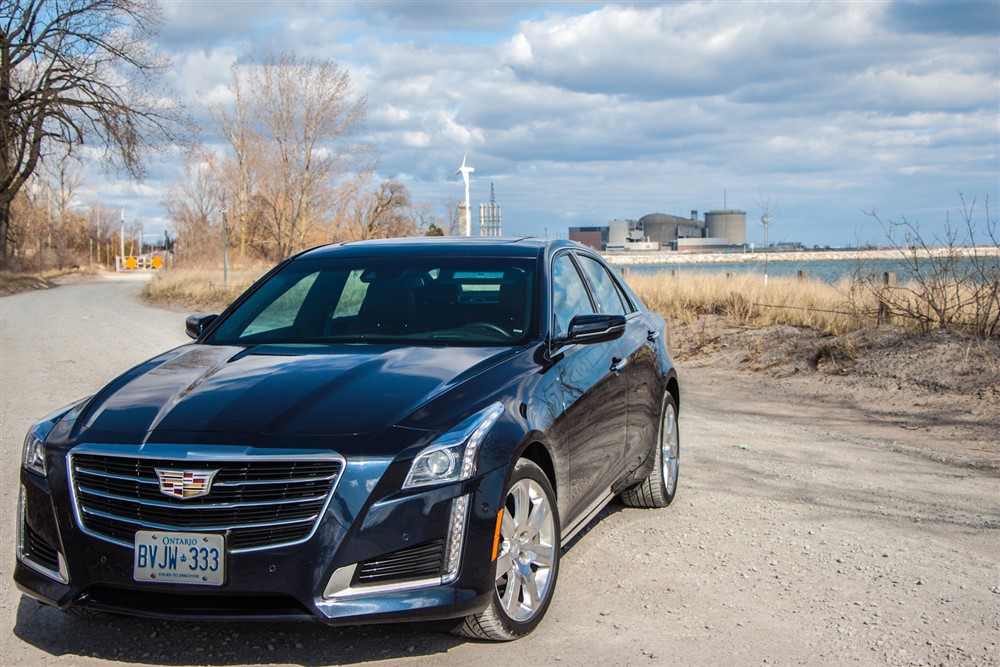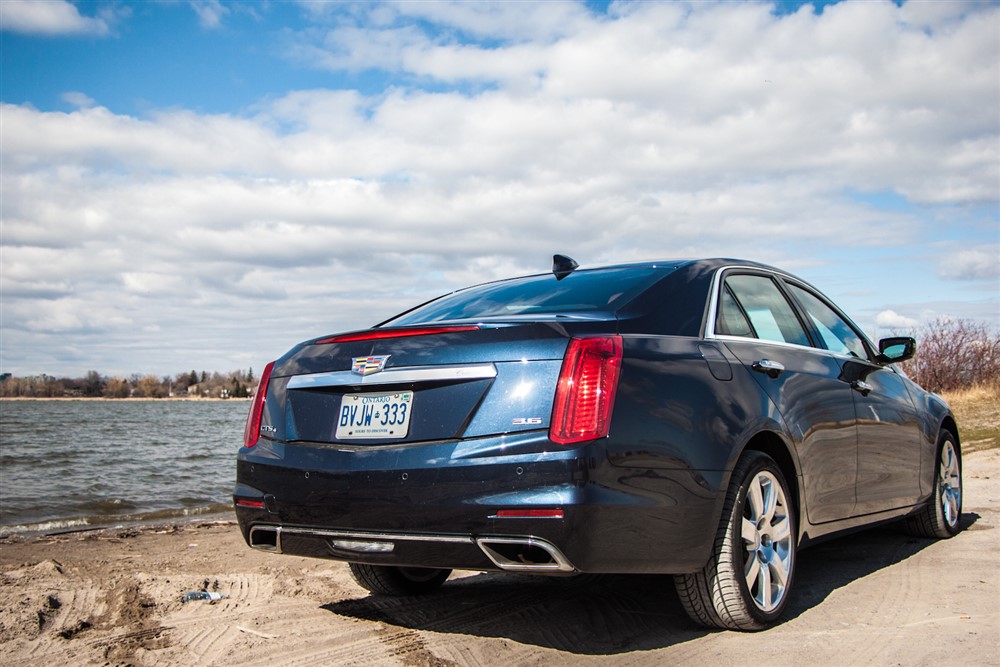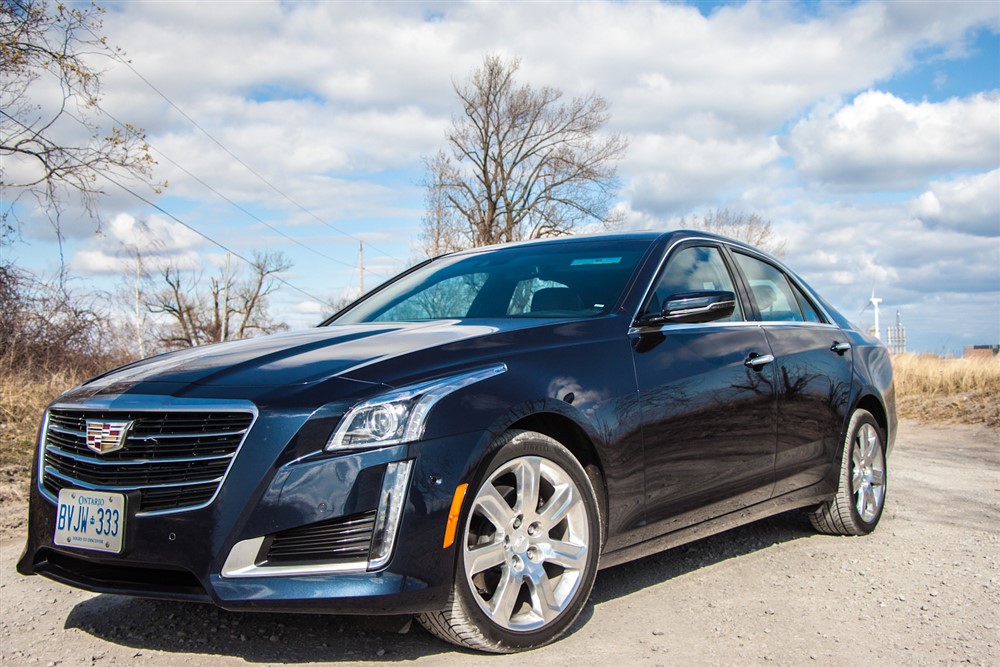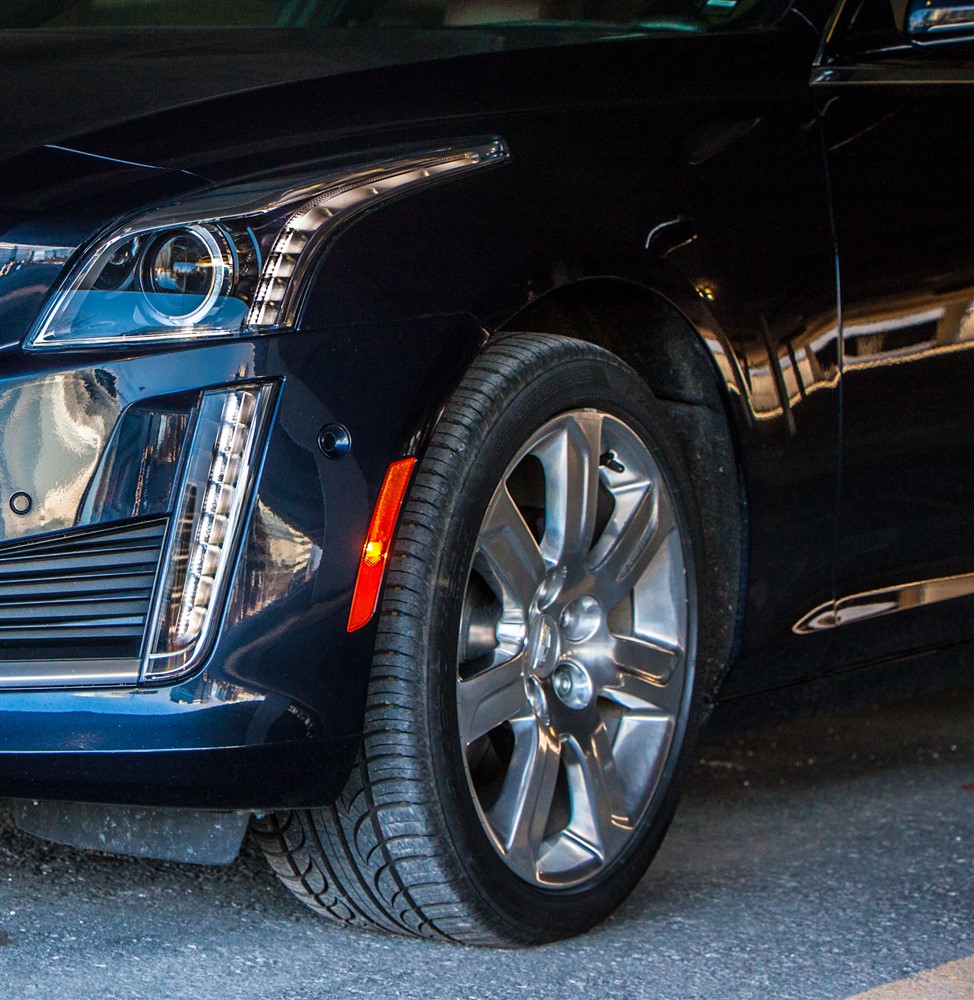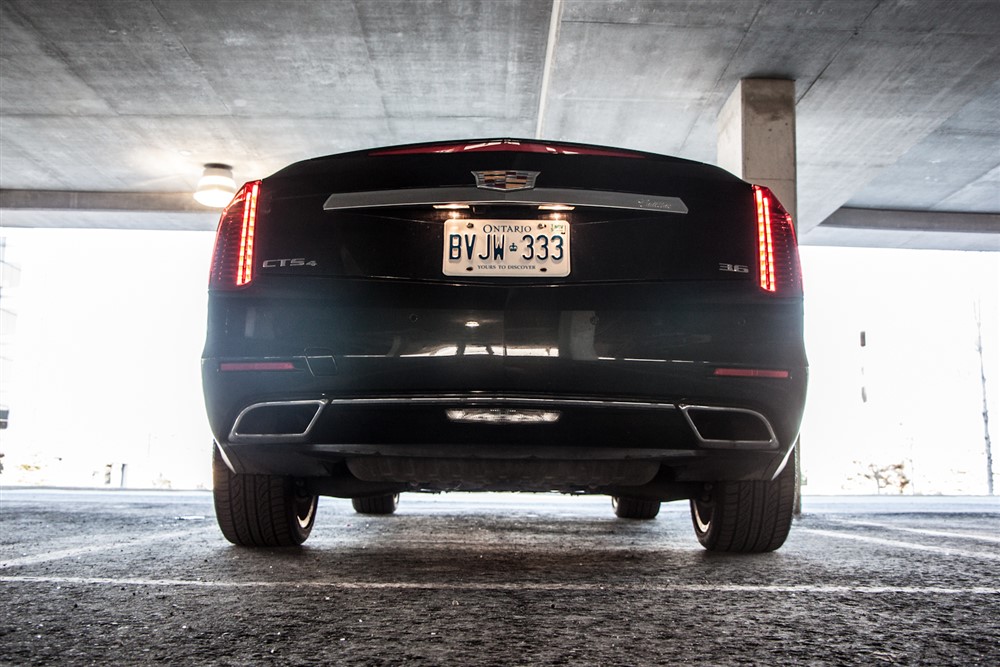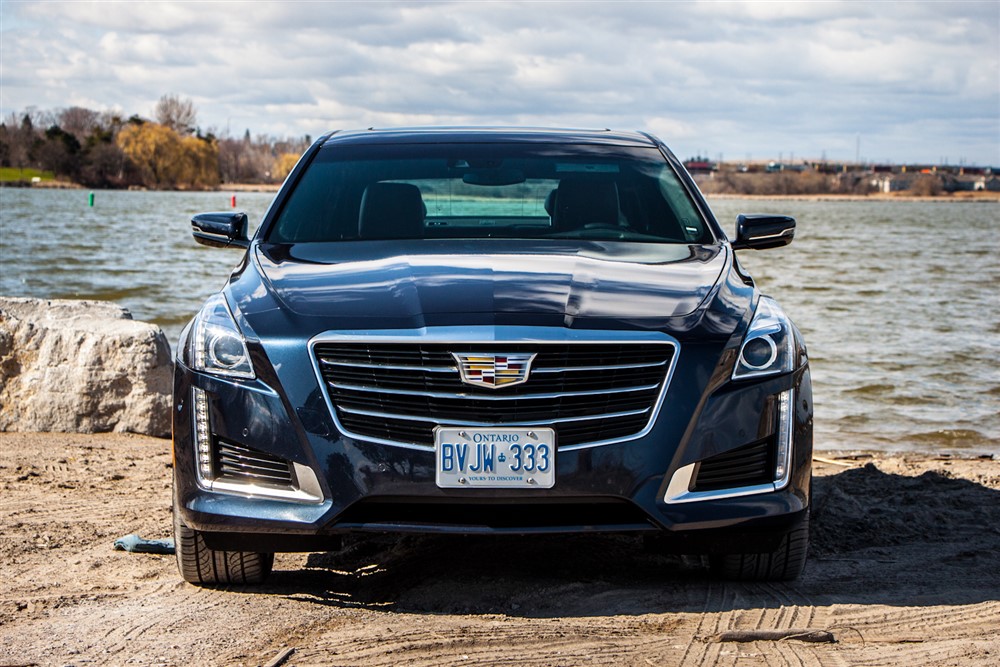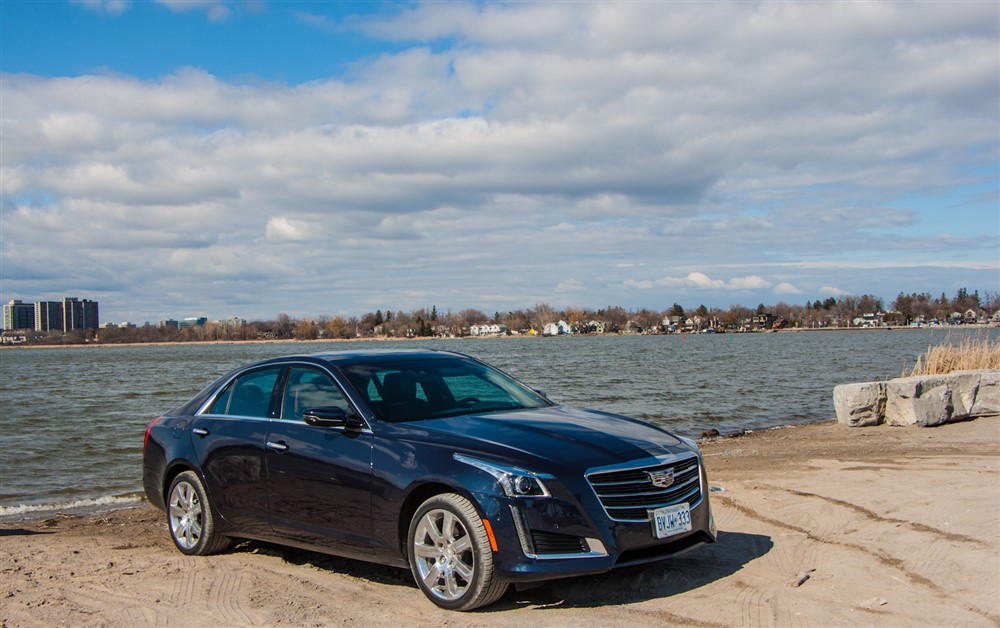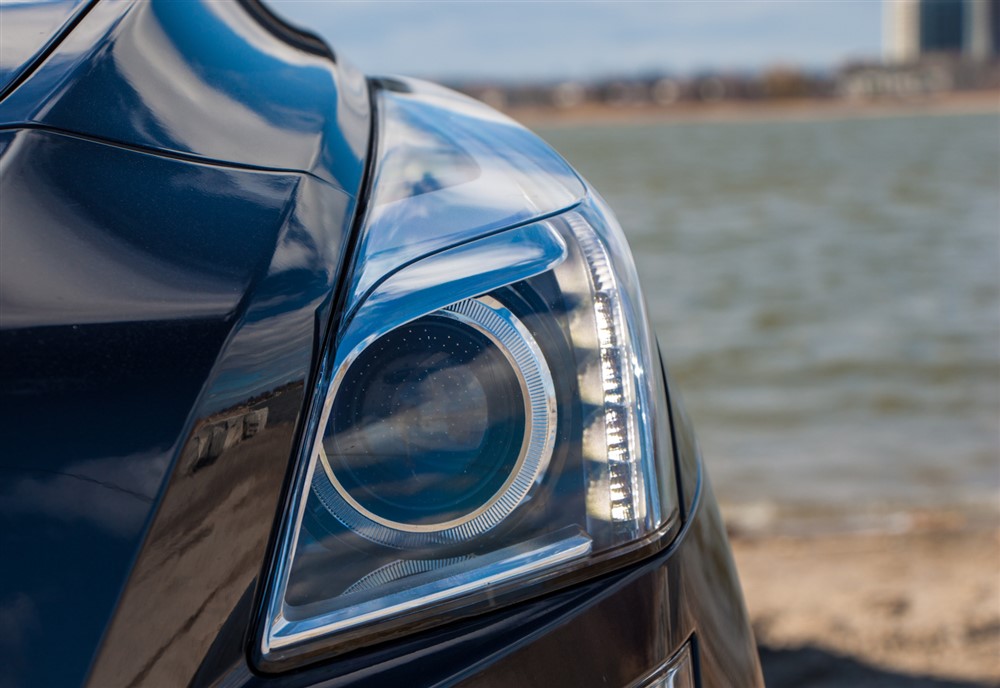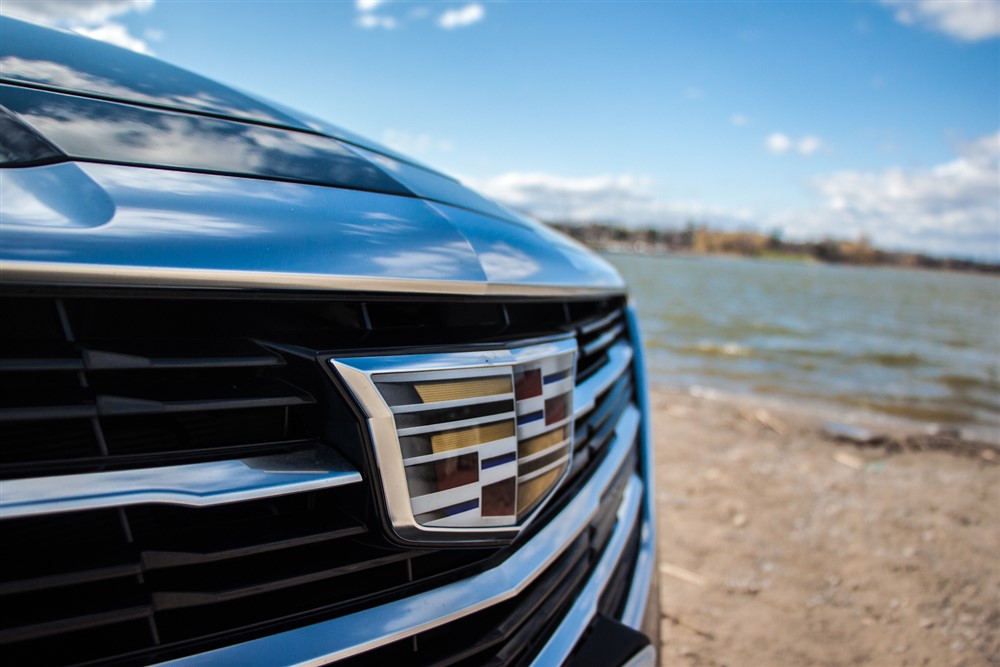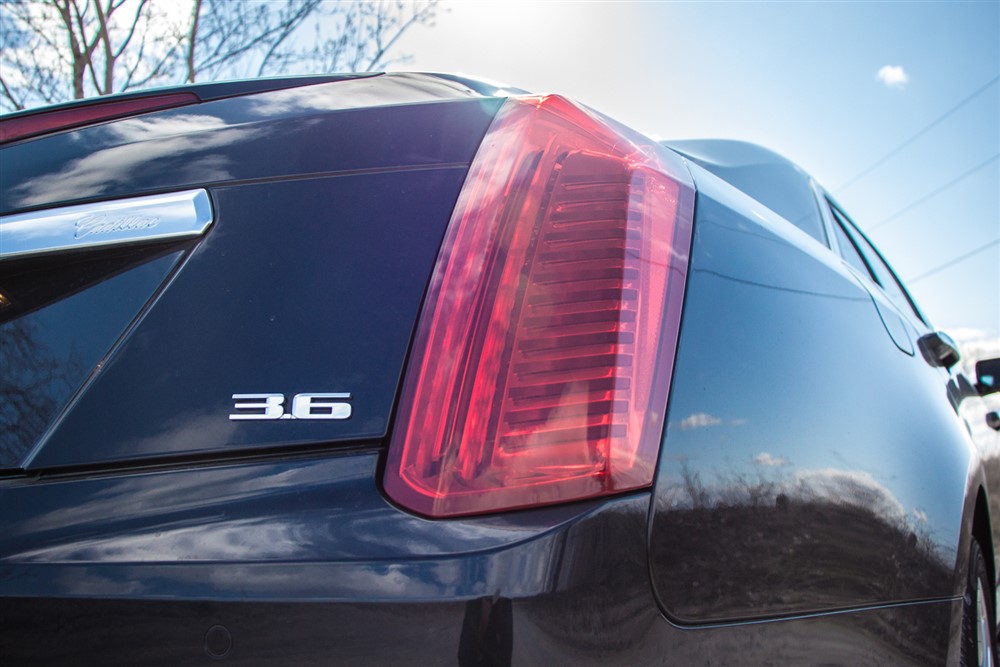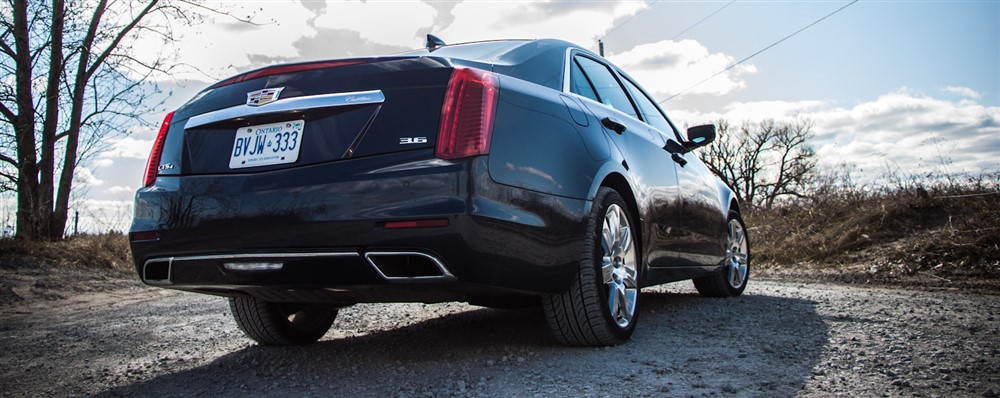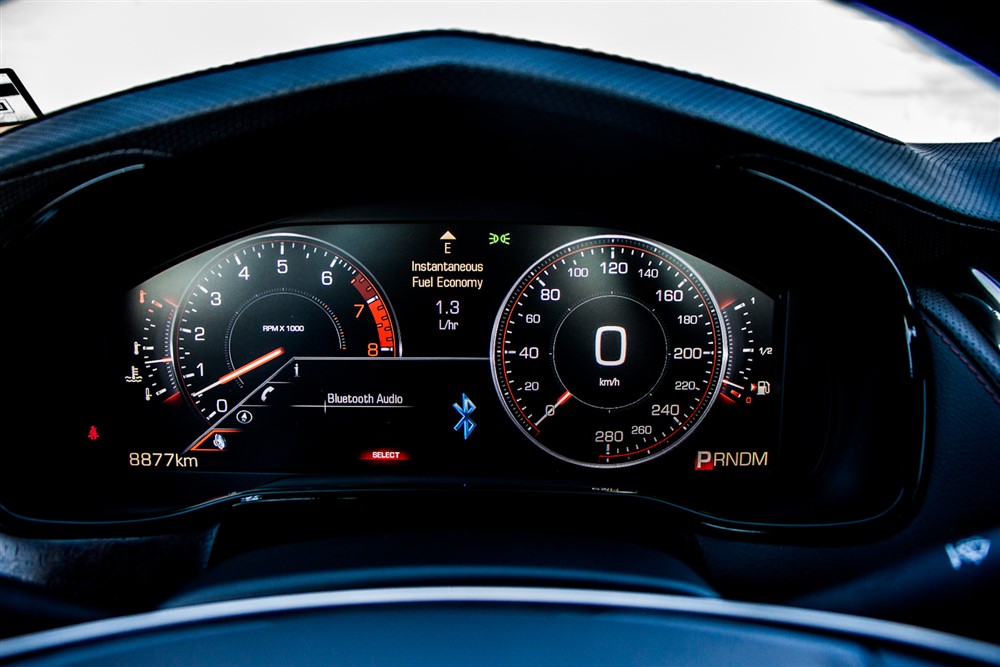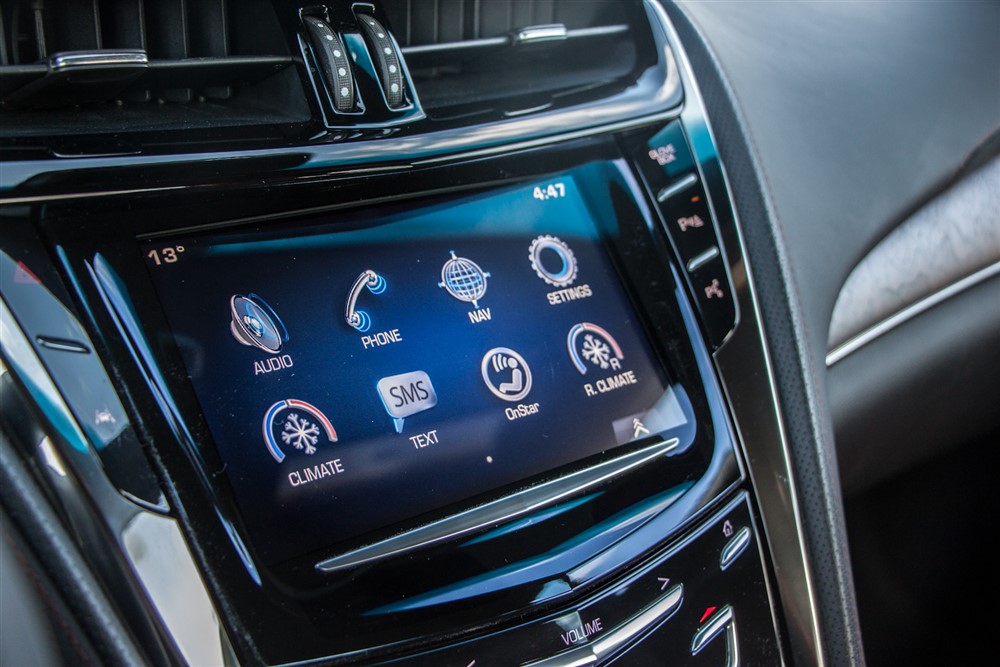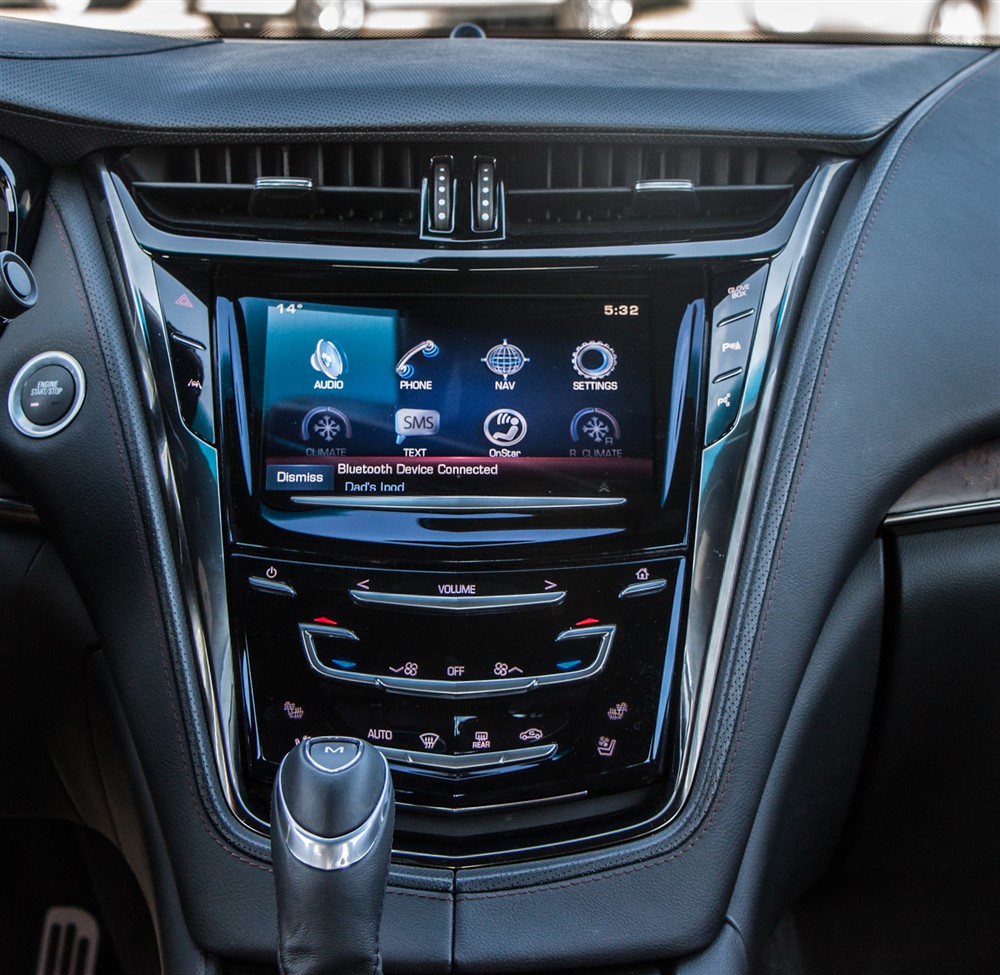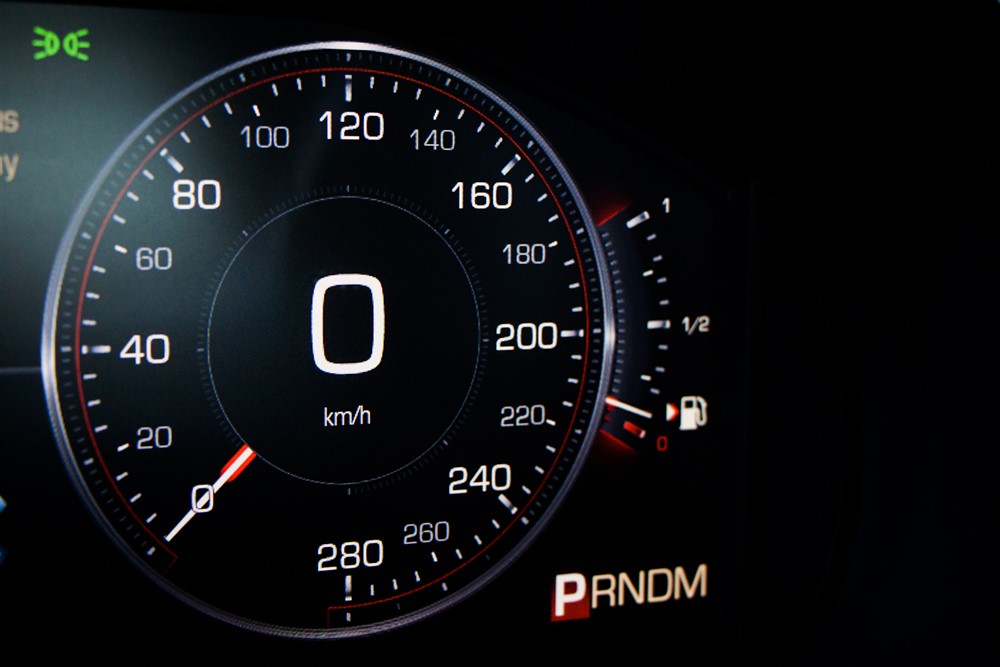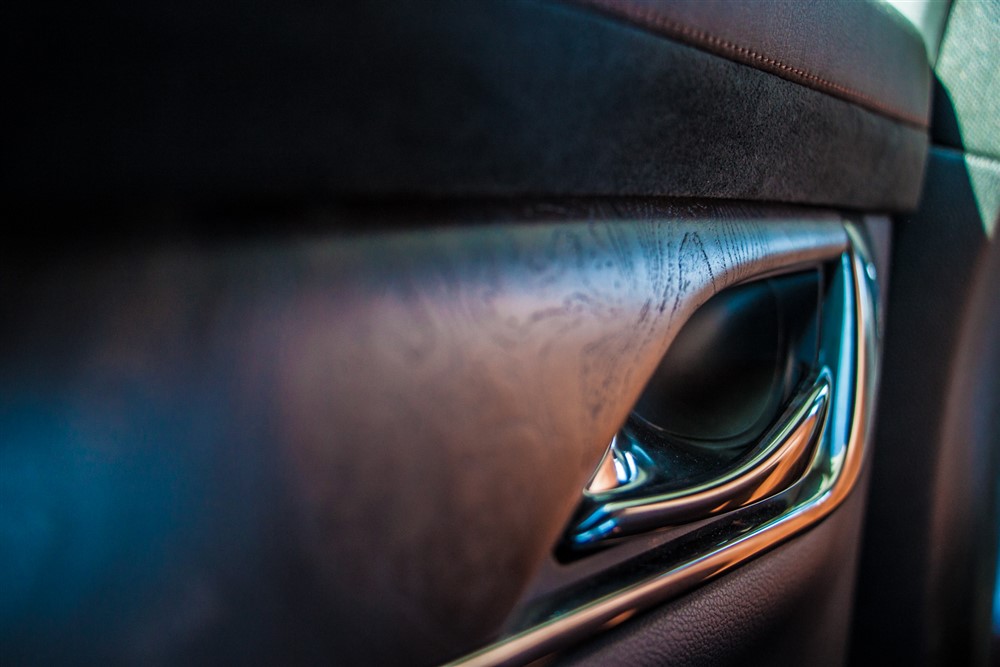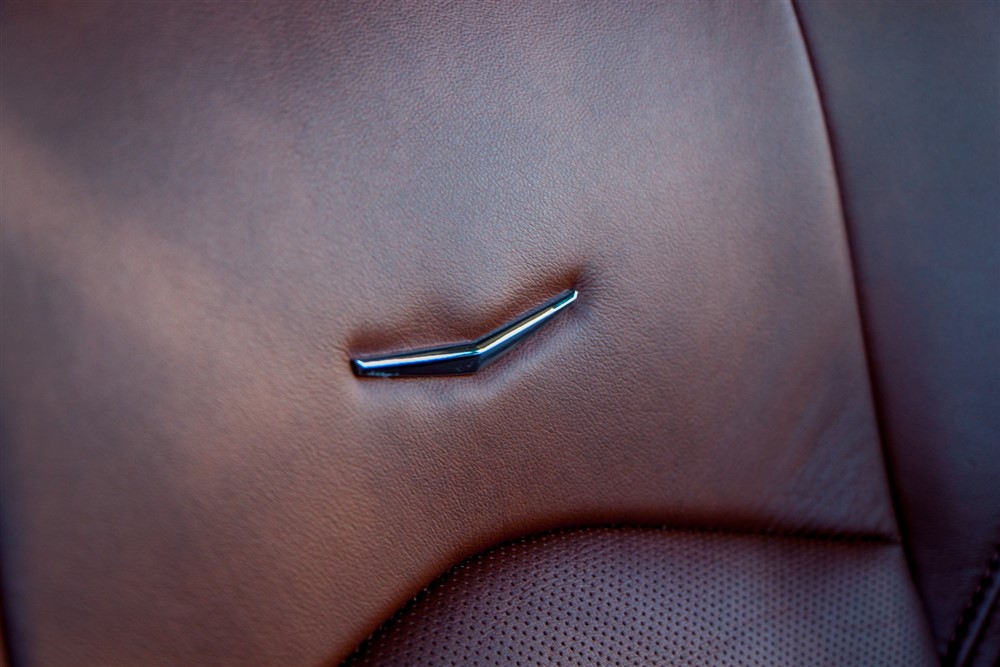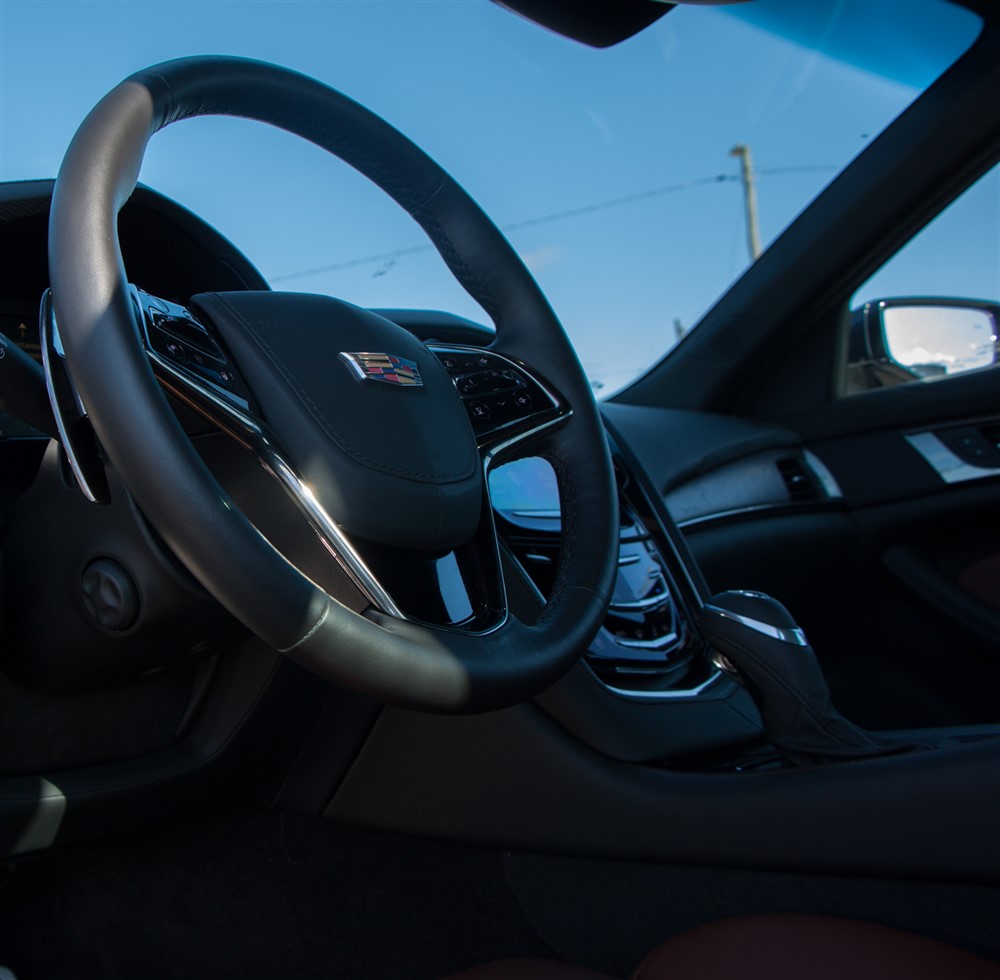Ever since implementation of their Art & Science design language just over a decade ago, Cadillac has been trying to go head-to-head with the Germans, who set and hold the standard for today’s luxury segment. Up until recently, these attempts weren’t all that successful. With the introduction of the new ATS a couple years ago though, things changed significantly, as we considered it to have one of the best chassis’ ever seen on an entry-level sport sedan. The new CTS received raving reviews from our team as well as from other colleagues in the industry, so I decided to spend some time getting to know it better. In one of the first weeks of spring, I grabbed the keys to a 2015 Cadillac CTS 3.6 Premium, and put it through my weekly grind.
First things first; the key point to the new CTS is its styling. This car looks awesome; the muscular lines and angles work surprisingly well in a midsize sedan, and the LED lighting throughout helps it stand out at night. This may sound gimmicky, but the newer Cadillacs with the LED accents look truly sensational at night, unlike anything else on the road. Originally an entry-level sport sedan intended to compete with the 3-series and A4 crew, the CTS has gone up in size, and now competes with the BMW 5-series, Audi A6, and Mercedes-Benz E-Class. Those who found the ATS to be a bit on the tighter side for interior accommodations will likely feel at home in its bigger brother.
Cadillac offers a few different powertrain options on the CTS. The entry level motor is a turbocharged 2.0L turbo (good for 272 horsepower and 295 lb-ft of torque), a great engine that we feel is more at home in the smaller ATS. There’s also a hot CTS Vsport, which packs a twin-turbocharged version of the motor in this tester. We picked the sweet spot in the CTS lineup though; a 3.6L V6 with 321 horsepower at 6800rpm and 275 lb-ft at 4,800rpm. The CTS Vsport comes with an 8-speed automatic, while this all-wheel-drive 3.6L is equipped with the 6-speed automatic.
The reason this motor is such a great unit is the effortless power delivery and the great noise that it creates. The spec sheet on the 3.6L makes it appear relatively conservative; the Audi A6 has 50 lb-ft of torque more, and the transmission is the only six-speed in a class dominated by 7 and 8-speed units. Even still, the Cadillac’s relatively light weight allows it to hustle to 100 km/h in 5.8 seconds, which is faster than a BMW 535i, but it is 0.3 seconds slower than the A6 3.0T. Response from the throttle is very good, and the paddle shifters are relatively quick. Even still, I chose to let the transmission manage shifts on its own rather than interfering.
What’s truly relevant in our Canadian climate is the badge on the back of my CTS that said “CTS4”. Similar in concept to the ATS4 and XTS4, the number at the end signifies that the car packs Cadillac’s all-wheel-drive system. There is a rear-drive model available, but I would assume that the majority of CTS’ sold in Canada will be all-wheel-drive. The system only adds to the Caddy’s excellent driving dynamics. Seriously – this car is capable of shutting up anybody who might scoff at a Cadillac’s ability to handle. Steering response is excellent and the car gracefully dances at the will of its driver.
If the introduction of the ATS for model year 2013 was any indication, it’s no surprise that the Cadillac CTS packs truly exquisite driving dynamics, especially when optioned out with the magnetic dampers that ours had. This car is like a finely tailored suit. The chassis absorbs bumps nicely without any fuss, but doesn’t go as far as to isolate the driver from the road. It’s the best of both worlds, really. If anything, the CTS feels like the E39 BMW 5-series, which remains a benchmark for the midsize luxury sedan class even though it has been out of production for over a decade. At highway speeds, the CTS almost shrinks; it feels considerably smaller than it is and at no point does it feel cumbersome. Even the successors of the E39 haven’t been able to replicate just how good it is, but somehow the guys over at Cadillac seem to have discovered that perfect combination.
Thanks to the 6-speed automatic transmission, fuel economy suffers a little bit. Using only premium grade gasoline, I wasn’t able to do much better than 10L/100km, which is exactly what my colleague Zack got in a virtually identical car last year during the winter. To be fair though, the musical engine note of the 3.6L led me to be a little bit spirited with my driving throughout the test week, which also contributed to my fuel economy. In ideal conditions, it’s very realistic to expect the CTS to achieve numbers in the 9L/100km range.
The CTS Premium Collection is the top-trim car, and starts at just under $70,000. It includes the stunning LED lighting throughout the car, tri-zone automatic climate control, Bose sound with active noise cancellation, performance seats that are heated and ventilated (20-way adjustable), factory remote start, and a plethora of other features. Our car also added the Premium Equipment Group (code 1ST) that adds adaptive cruise control, collision protection with front and rear automatic braking, a panoramic (Ultraview) sunroof, the excellent Magnetic Ride Control system, a self parallel park system, rear window sunshades, and automatic wipers. The total sticker on our car was $75,975, for a truly loaded CTS.
I have a love/hate relationship with the electronics in the current generation of Cadillacs. The electronic instrument cluster and steering wheel controls are wonderful. I like that you can configure the gauges and menus around them exactly to your liking, and even use the steering wheel controls to browse through your external device. The hideaway compartment beneath the center touchscreen is great as well, as it allows your iPod or other USB device to be truly hidden away. However, I still can’t get on the same page as the CUE infotainment system. I will admit it’s gotten a bit better through various software updates, but it’s still in need of some fine-tuning.
Here’s one that most buyers probably have no clue about – the “CTS” name was originally short for “Catera Touring Sedan”, the Catera being the Opel Omega-based sedan that was the predecessor to the CTS. There’s an edge this sedan has over its rivals, and it’s largely based on aesthetics. Cadillac utilizes unrivaled styling insdie and out, and interior materials that are right on par with the competition. While competitors such as the Lexus GS and BMW 5-series still use contemporary yet traditional styling throughout their lineups, Cadillac takes a riskier approach. The 2015 CTS still looks unquestionably like a Cadillac, but its polarizing styling prompts second glances that will undoubtedly bring new buyers into the Cadillac brand.
2015 Cadillac CTS4 3.6 Gallery

